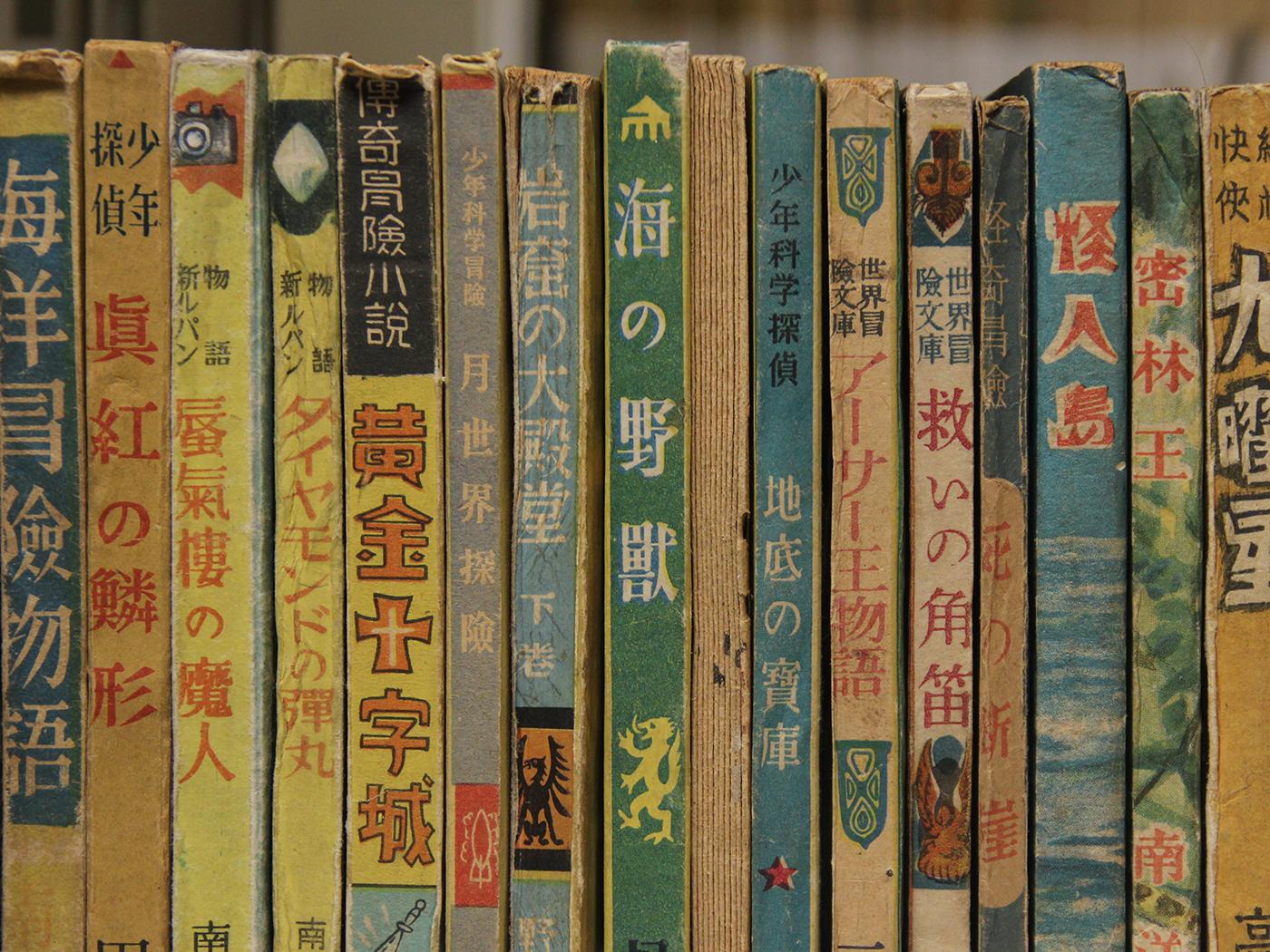ゴードン・W. プランゲ文庫

ゴードン・W. プランゲ文庫は、第二次世界大戦後1945年から1949年までに日本で出版された印刷物のほとんどを所蔵しています。商業出版物はもちろん、非営利団体や組合、さらには多数の個人による出版物を含む資料群は、当時のあらゆる人々の「声」を反映しています。
プランゲ文庫はメリーランド大学図書館のSpecial Collections and University Archives (SCUA)に属します。プランゲ文庫の資料は、ホーンベイク図書館北館1階の閲覧室(メリーランドルーム)にて利用に供されています。資料をご利用の際にはSpecial Collections Accountのユーザー登録が必要です。閲覧申し込み資料数は、訪問期間内に閲覧できる範囲内でお申し込みください。
ご質問がある方は、お問い合わせフォームからご連絡ください。(日本語可)
Contact

Kana Jenkins
Exhibitions
Visit our galleries in the Hornbake and Michelle Smith Performing Arts Libraries for current exhibitions and explore digital exhibitions online.
Research Awards
Each year, research grants are awarded to those studying the period of the Allied Occupation of Japan and its aftermath, 1945-1960. Learn more about the award and past recipients.
Donations
We accept donations related to the Occupation of Japan as well as contributions to one of our unique gift funds.
ゴードン·W·プランゲ博士
ゴードン・W・プランゲは1910年7月16日にアイオワ州ポメロイで生まれました。アイオワ州立大学に学び、1937年に博士号を取得したのち、メリーランド大学で歴史学の教授として教鞭をとります。
1943年、プランゲ博士はメリーランド大学を休職しアメリカ海軍に入隊、1945年には占領軍の一員として日本へ赴任します。その後海軍の任期を終えてからも民間人として日本に滞在し、1946年から1951年までマッカーサー元帥の下で歴史課長・歴史室長を務めました。連合軍による日本メディアの検閲が 1949年に終了し、CCDが解体されることが決まると、残された資料の歴史的価値を見抜いたプランゲ博士は、機密扱いだったこれらの資料をメリーランド大学へと搬送できるよう手はずを整えました。資料は翌年大学に到着し、1978年9月15日、ゴードン・W・プランゲ文庫と命名されます。 命名式典は1979年5月6日に行われました。式典におけるプランゲ博士のスピーチ記録は、こちらをご覧ください。
プ ランゲ博士はアメリカに帰国後、1980年5月15日に亡くなる数カ月前までメリーランド大学で教壇に立ちつづけ、現在でもすばらしい教師として多くの卒業生たちの記憶に残っています。プランゲ博士はまた、著書『トラ トラ トラ』をはじめ、太平洋戦争に関連する研究でも高く評価されています。
民間検閱局(CCD)
1945年8月15日に日本が連合軍に降伏すると、同年8月30日にマッカーサー元帥が日本に到着しました。それから3週間後の9月、マッカーサー率いる連合国軍司令部(SCAP)は日本の報道機関向けに10項目からなるプレス・コードを発令します。その後1949年11月まで、陸軍諜報部(G-2)に属し占領開始と同時にフィリピンから日本へ移動してきた民間検閲局(CCD)が、民間におけるすべての通信報道活動(郵便、電話、電報、映画、放送、出版)に対して検閲を行ないました。プランゲ文庫の所蔵資料は、CCDによって検閲のために集められた出版物で構成されています。
検閲が行なわれていた期間、日本の出版者は出版物をCCDに2部ずつ提出することが義務づけられていました。提出された書籍やパンフレットには、CCDの 検閲官がジャンルと番号を割り振り、提出された日付、ローマ字化したタイトル、発行予定部数、用紙の種類をカバーに記入しています。その後、CCDは各出 版物がプレス・コードに抵触していないかどうかを判断します。問題のあった場合には、部分的な削除、出版差し止め、保留、書き換えが求められました。なか には、出版者が自ら出版を取り下げることもありました。検閲処分のいかんにかかわらず、提出された出版物の1部は出版者に返送され、もう1部はCCD用の 「File Copy」として保管されました。
提出された出版物がプレス・コードに抵触するとして出版者に戻された場合、出版者はCCDの指示に従って内容を修正しなければなりません。ただし、修正の際には削除箇所を黒く塗りつぶしたり、空白にしたりすることは認められず、必ず版を組みなおすよう要求されました。 そのため、占領が終了してかなりの時間が経つまで、一般市民は検閲が行なわれていたことを知りませんでした。
保存 · 利用
メリーランド大学はこれまでに資料の整理と保存に力を注いできました。その成果は着実に実を結んでいます。
戦後は用紙が極端に不足し、日本の出版者は品質の悪い酸性紙の使用を余儀なくされました。その結果、この時代の出版物は劣化が加速度的に進んでいます。1992年、メリーランド大学と国立国会図書館はプランゲ文庫の13,799タイトルの雑誌保存共同事業を開始しました。この事業は1997年3月に完了し、63,000枚のマイクロフィッシュと雑誌目録は、メリーランド大学図書館と国立国会図書館で利用に供されることになりました。1993年には国際交流基金日米センターから助成を受け、新聞と関連検閲文書のマイクロ化が開始されました。その後、米国政府連邦人文科学振興基金(NEH)および日本財団からの追加助成を受けて、新聞保存プロジェクトは1999年に完了しました。
2001年からの4年間には、日本財団から助成を受け、約10,000点の教育関係図書の目録作業を実施しました。
現在は、2005年に国会図書館と交換した図書保存事業覚書に基づき、約71,000点の図書・パンフレットのデジタル保存作業を進めています。同時に図書資料の書誌情報を作成し、オンラインカタログでの公開を続けています。
メリーランド大学図書館の主要な目標は研究者の利用に供するため全プランゲ資料を保存するということであり、上記のような事業によって目標の達成に大きく近づきつつあります。